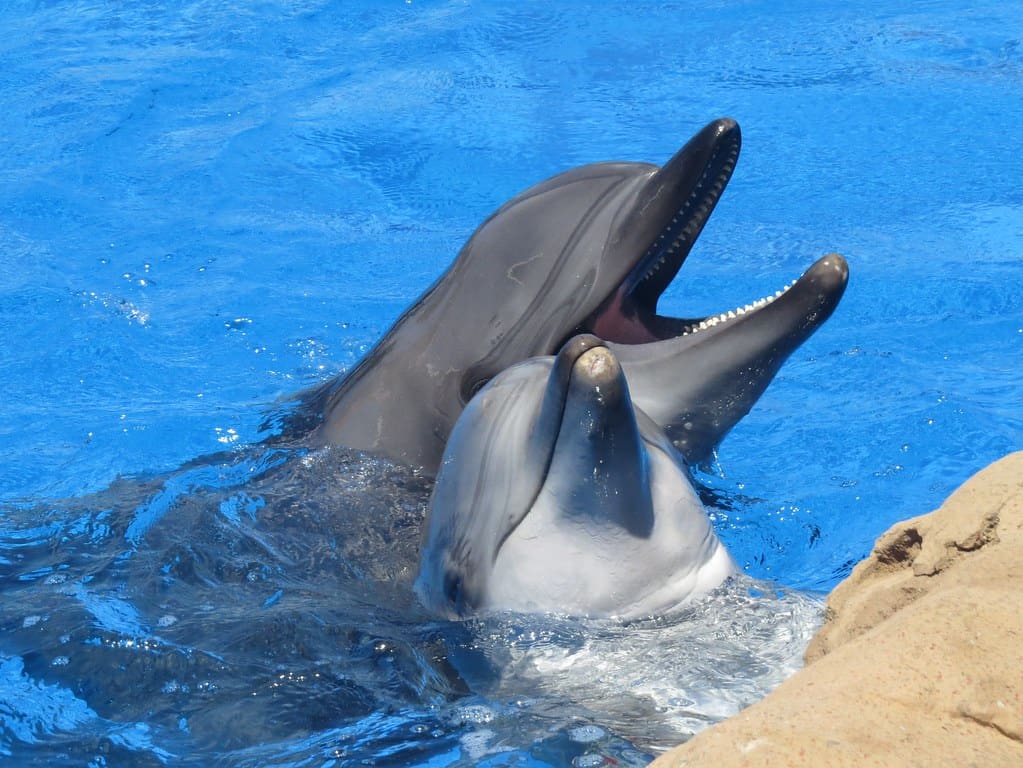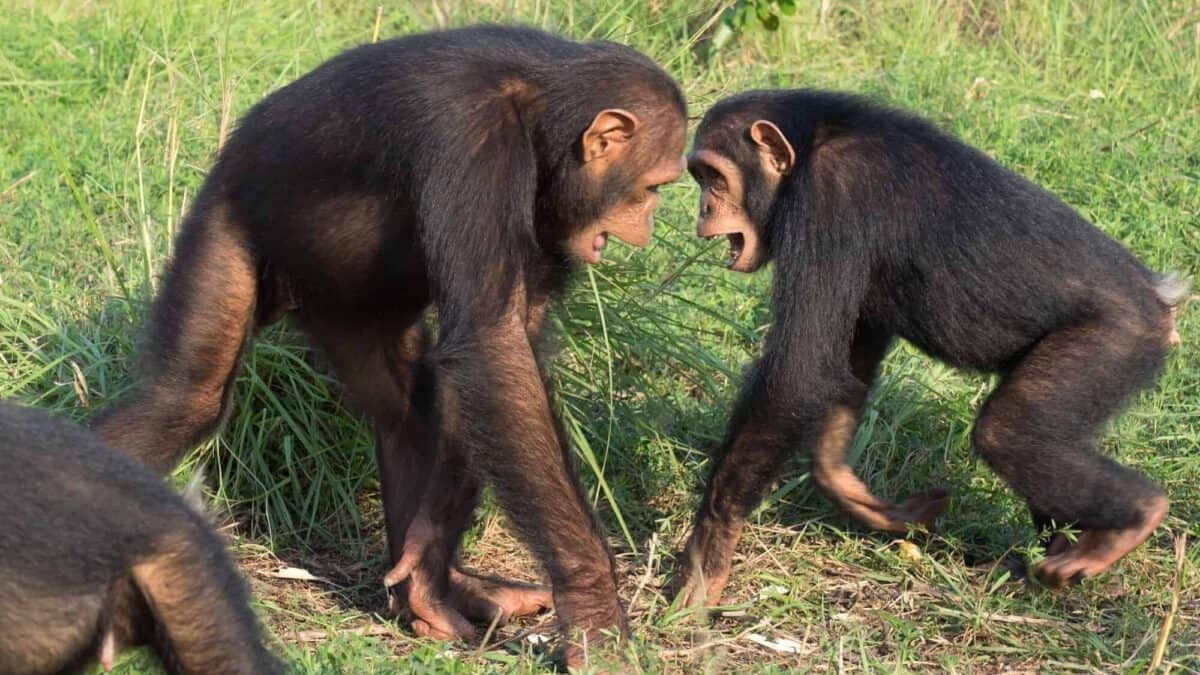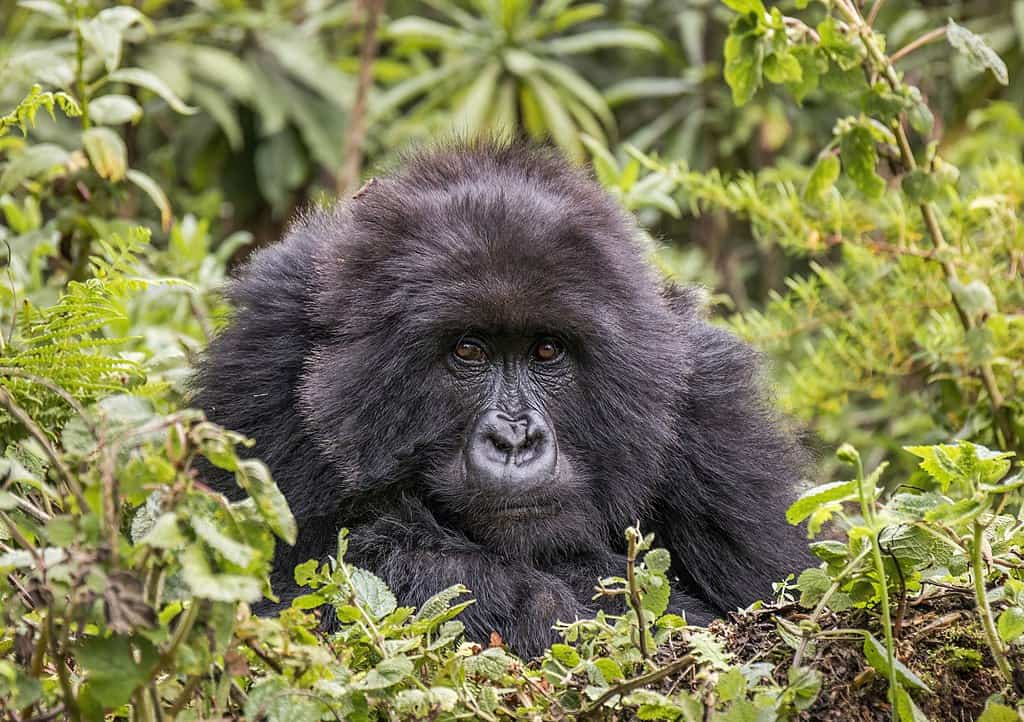When we consider highly intelligent species on our planet, humans and great apes typically come to mind first. However, dolphins have evolved a sophisticated level of intelligence that rivals, and in some ways surpasses, that of our closest primate relatives. This intelligence has developed through a fascinating example of convergent evolution, where dolphins and primates evolved similar cognitive abilities despite following completely different evolutionary paths. While humans and apes evolved on land, dolphins returned to the sea around 50 million years ago, adapting to an entirely different environment that presented unique challenges and opportunities for brain development.
What makes dolphin intelligence particularly remarkable is that it evolved in an environment without hands for tool use and without fire for cooking—two factors often credited with boosting primate brain evolution. Instead, dolphins developed their impressive cognitive abilities while adapting to complex social structures, the need for sophisticated communication, and the challenges of hunting in a three-dimensional aquatic environment. This divergent evolutionary history makes the similarities between dolphin and primate brains all the more fascinating to scientists studying comparative neurobiology and the evolution of intelligence.
Brain Size and Encephalization Quotient

When comparing brain capacity across species, absolute brain size doesn’t tell the whole story, as larger animals naturally have larger brains. Scientists instead rely on the Encephalization Quotient (EQ), which measures brain size relative to what would be expected for an animal of a particular body size. On this scale, humans lead with an EQ of approximately 7.4 to 7.8, meaning our brains are seven times larger than expected for our body size. Dolphins follow closely with impressive EQs ranging from 4.1 to 4.5, significantly higher than great apes like chimpanzees, which have EQs of approximately 2.2 to 2.5.
Bottlenose dolphins, in particular, have brains that weigh about 1,600 grams, slightly larger than human brains, which average around 1,300 to 1,400 grams. However, body size must be considered—dolphins have larger bodies than humans, making their relative brain size smaller. Nevertheless, this impressive absolute and relative brain size in dolphins indicates significant cognitive potential and has led researchers to classify dolphins among the most intelligent animals on Earth, with cognitive abilities in many domains comparable to those of great apes.
Cortical Complexity and Folding

The cerebral cortex—the wrinkled outer layer of the brain responsible for higher cognitive functions—reveals striking similarities and differences between dolphins, apes, and humans. Dolphins possess an extraordinarily convoluted cortex with more folds (gyri and sulci) than any other animal, including humans. This extensive cortical folding provides dolphins with more cortical surface area packed into their skull. While the human cortex is about 2.8 mm thick with approximately 16 billion neurons, the dolphin cortex is thinner at about 1.3 to 1.8 mm but has a greater surface area due to its extensive folding.
This difference in cortical organization reflects different evolutionary priorities. Humans have developed thicker cortices with more densely packed neurons, particularly in areas associated with higher cognitive functions like planning and abstract thinking. Dolphins, meanwhile, have evolved a more widely distributed neural architecture with greater interconnectivity between brain regions, possibly facilitating different types of information processing adapted to their aquatic lifestyle and social structures. Despite these differences, both adaptations have produced remarkable intelligence, demonstrating that nature has found multiple routes to evolving complex cognition.
Neocortex Ratio and Social Intelligence

The neocortex ratio—the size of the neocortex relative to the rest of the brain—is often considered a key indicator of social intelligence. This ratio correlates strongly with social group size and complexity across species. Humans have the highest neocortex ratio among primates, which aligns with our complex social structures and relationships. Remarkably, dolphins possess a neocortex ratio comparable to that of humans and significantly higher than those of great apes. This expanded neocortex supports dolphins’ intricate social lives, which include forming dynamic alliances, maintaining long-term relationships, and engaging in sophisticated communication.
Research indicates that both humans and dolphins have evolved particularly large areas devoted to association cortex—regions that integrate information from various brain areas to form complex thoughts and behaviors. The similar expansion of these regions, despite vastly different evolutionary histories, suggests that social complexity may be a universal driver of brain evolution across mammalian lineages. This convergent evolution highlights how similar selective pressures can produce comparable neural adaptations in species separated by millions of years of evolution.
Paralimbic Systems and Emotional Processing

Dolphins possess a highly developed paralimbic system, the brain region associated with emotional processing, social bonding, and self-awareness. This system in dolphins is notably expanded compared to that of many other mammals, including some primates. The paralimbic lobe in dolphins includes structures analogous to areas in humans and apes that process emotions and social information. This neural similarity may explain why dolphins exhibit behaviors suggesting emotional depth, strong social bonds, and possibly empathy—traits traditionally associated with primates.
Interestingly, while humans and apes have a clearly defined limbic system surrounded by the neocortex, dolphins have evolved a somewhat different arrangement where the paralimbic structures extend outward to the cortical surface. This unique organization may represent an evolutionary adaptation to aquatic life, potentially facilitating different forms of emotional and social processing. Despite these structural differences, behavioral studies consistently demonstrate that dolphins exhibit complex emotional lives comparable to those observed in great apes, suggesting these different neural architectures can support similar cognitive and emotional capabilities.
Spindle Neurons and Social Cognition

One of the most fascinating discoveries in comparative neurobiology was the identification of von Economo neurons (VENs), also called spindle neurons, in dolphin brains. These specialized brain cells were previously thought to exist only in humans and great apes, where they play crucial roles in social cognition, intuitive judgment, and rapid emotional processing. The presence of these cells in dolphins represents another remarkable example of convergent evolution, as dolphins and primates independently evolved these specialized neurons despite their last common ancestor living over 95 million years ago.
In humans, spindle neurons are concentrated in the anterior cingulate cortex and the fronto-insular cortex—regions involved in social awareness, empathy, and intuitive decision-making. Dolphins have spindle neurons in analogous brain regions but with a different distribution pattern that may reflect their unique sensory world and social needs. The independent evolution of these specialized cells in two distantly related mammalian lineages suggests they may be a neurological prerequisite for certain types of complex social cognition and self-awareness, regardless of a species’ evolutionary history or physical environment.
Sleep and Hemispheric Specialization

One of the most profound differences between dolphin and primate brains lies in how they manage sleep. Unlike humans and apes, dolphins have evolved unihemispheric sleep—the ability to rest one brain hemisphere while keeping the other alert. This adaptation allows dolphins to maintain vital functions like surfacing to breathe and remaining vigilant for predators. During this unihemispheric sleep, one eye remains open (contralateral to the awake hemisphere) while the other closes, creating a state of partial consciousness that has no real equivalent in primate brain function.
This remarkable adaptation has led to different patterns of hemispheric specialization in dolphins compared to primates. While humans show strong hemispheric lateralization for functions like language (typically left hemisphere) and spatial processing (typically right hemisphere), dolphins exhibit more distributed processing across both hemispheres. This may be an adaptation to their need for constant hemispheric alternation during sleep. Despite these differences, dolphins still show some hemispheric specialization, particularly for processing their complex acoustic communication signals, suggesting that some degree of hemispheric specialization may be fundamental to complex information processing regardless of evolutionary history.
Sensory Processing and Echolocation

Perhaps the most distinctive feature of dolphin brains compared to primate brains is their specialized regions for echolocation processing. Dolphins have devoted substantial neural resources to processing the complex acoustic information gathered through echolocation—their biological sonar system. The auditory cortex in dolphins is massively expanded compared to primates, with specialized regions for processing the detailed echoes that allow them to create a “sound picture” of their environment. This represents a fundamentally different way of perceiving the world compared to the primarily visual processing that dominates primate brains.
This difference in sensory specialization has led to unique neural adaptations. While primates have expanded visual cortices with specialized regions for face recognition, color processing, and object identification, dolphins have developed intricate acoustic processing networks that can distinguish tiny differences in sound reflection patterns. Interestingly, dolphins can use this echolocation ability to detect internal structures in other animals, essentially “seeing” inside bodies in a way humans cannot without technology. These different sensory specializations highlight how intelligence can develop along different pathways while achieving comparable levels of environmental understanding and cognitive sophistication.
Self-Awareness and Mirror Recognition

The capacity for self-recognition in mirrors is considered a significant indicator of self-awareness and has traditionally been observed primarily in humans and great apes. Remarkably, dolphins have also demonstrated this ability, joining a very exclusive club of animals capable of recognizing themselves in mirrors. When marked with temporary dye in areas they cannot normally see, dolphins will position themselves to view the marked area in a mirror, suggesting they understand the reflection represents their own body. This cognitive ability indicates a level of self-awareness previously thought to be limited to primates.
The neural basis for this self-awareness likely involves the expanded paralimbic system in dolphins, which includes structures analogous to regions in the human brain associated with self-recognition. Despite evolving completely independently from primates, dolphins have developed comparable neural architecture supporting similar higher cognitive functions. This convergent evolution of self-awareness suggests that certain cognitive abilities may emerge when brains reach particular levels of complexity, regardless of the evolutionary path taken to reach that complexity. The similar performance of dolphins and great apes on tests of self-recognition, despite their vastly different brain structures, represents one of the most compelling examples of convergent cognitive evolution.
Social Learning and Cultural Transmission

Both dolphins and great apes demonstrate sophisticated social learning abilities, allowing them to transmit knowledge across generations—a hallmark of cultural behavior. In dolphins, this manifests as the transmission of specialized feeding techniques, tool use (such as using sponges to protect their snouts while foraging), and distinctive vocalizations that vary between social groups. These learned behaviors create distinct cultural traditions within dolphin communities that parallel the cultural variations observed in great ape societies, though they take forms adapted to their aquatic environment.
The neural basis for this cultural capacity likely lies in specialized “mirror neuron” systems. These neural networks, first discovered in primates, activate both when an animal performs an action and when it observes another performing the same action, facilitating imitation and social learning. Evidence suggests dolphins possess similar neural systems supporting their imitative abilities. The development of these parallel systems for cultural transmission in both dolphins and primates illustrates how similar selective pressures for social learning can produce comparable neural adaptations in distantly related species, highlighting the importance of social transmission for highly intelligent, long-lived species regardless of their evolutionary lineage.
Communication Complexity and Language Potential

Dolphin communication systems rival the complexity of those found in great apes, though they operate in a different sensory modality. While primate communication is primarily visual and vocal, dolphin communication is predominantly acoustic, consisting of a complex array of whistles, clicks, burst pulses, and other sounds. Each dolphin develops a unique “signature whistle” that functions similarly to a name, allowing individuals to identify each other across substantial distances in the ocean. This sophisticated communication system includes elements of referential signaling, where specific sounds correspond to particular objects or concepts—a feature once thought unique to human language.
The brain regions supporting this complex communication differ between species, reflecting their different evolutionary histories. In humans, language processing primarily involves specialized left hemisphere regions like Broca’s and Wernicke’s areas. In dolphins, acoustic communication processing appears more distributed across both hemispheres, with greater involvement of subcortical structures. Despite these different neural architectures, both species have evolved communication systems of remarkable complexity. Research with dolphins has demonstrated their ability to understand artificial languages created by humans, including comprehension of novel sentences and abstract concepts, suggesting cognitive mechanisms for language processing that evolved independently from those in primates.
Conclusion: Convergent Paths to Complex Cognition

The comparison of dolphin and primate brains offers profound insights into the evolution of intelligence on our planet. Despite following entirely separate evolutionary trajectories for over 95 million years, dolphins and primates have independently evolved remarkably similar cognitive abilities supported by both convergent and divergent neural adaptations. This evolutionary convergence suggests that certain forms of intelligence may represent optimal solutions to the challenges of complex social living, regardless of whether a species evolves on land or in the sea.
The dolphin brain, with its extensive cortical folding, expanded paralimbic system, and specialized neurons for social cognition, demonstrates that the path to intelligence is not limited to the primate lineage. These parallel adaptations challenge our understanding of what drives cognitive evolution and suggests that complex intelligence may be more likely to evolve under certain ecological and social conditions than previously thought. The remarkable similarities in cognitive abilities between species with such different brain structures also raise fascinating questions about the nature of consciousness itself.
Understanding the different evolutionary paths that led to complex cognition in dolphins and primates not only deepens our appreciation of animal intelligence but also broadens our perspective on the nature of intelligence itself. Rather than viewing intelligence through an exclusively primate-centered lens, the study of dolphin cognition reveals the diverse forms that complex thinking can take. As we continue to explore the cognitive capabilities of dolphins, we may discover new dimensions of intelligence that offer insights into both animal minds and our own unique place in the cognitive landscape of Earth’s remarkable species.
Finally, the striking parallels between dolphin and primate cognition despite their vastly different evolutionary histories and environments serve as a powerful reminder of the diversity of intelligence on our planet. This understanding carries important ethical implications, suggesting that we should extend greater consideration to the cognitive and emotional lives of these remarkable marine mammals who, in many ways, think as complexly as we do—just differently.
- How Penguins Take Turns at Sea and Nest to Raise Chicks - August 9, 2025
- Dolphin Brains Compare to Those of Apes and Humans - August 9, 2025
- 14 Cutting-Edge Biotech Innovations That Will Shape the Future - August 9, 2025

